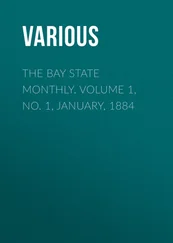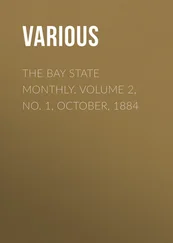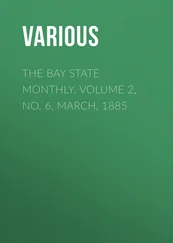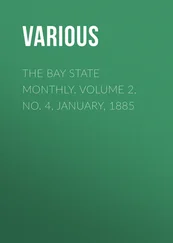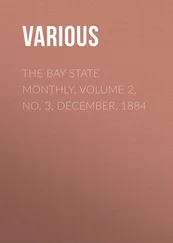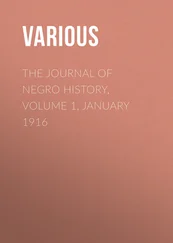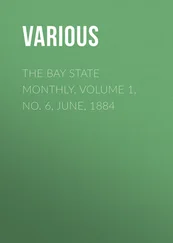Various - The Journal of Negro History, Volume 5, 1920
Здесь есть возможность читать онлайн «Various - The Journal of Negro History, Volume 5, 1920» — ознакомительный отрывок электронной книги совершенно бесплатно, а после прочтения отрывка купить полную версию. В некоторых случаях можно слушать аудио, скачать через торрент в формате fb2 и присутствует краткое содержание. Жанр: foreign_antique, periodic, История, foreign_edu, на английском языке. Описание произведения, (предисловие) а так же отзывы посетителей доступны на портале библиотеки ЛибКат.
- Название:The Journal of Negro History, Volume 5, 1920
- Автор:
- Жанр:
- Год:неизвестен
- ISBN:нет данных
- Рейтинг книги:4 / 5. Голосов: 1
-
Избранное:Добавить в избранное
- Отзывы:
-
Ваша оценка:
- 80
- 1
- 2
- 3
- 4
- 5
The Journal of Negro History, Volume 5, 1920: краткое содержание, описание и аннотация
Предлагаем к чтению аннотацию, описание, краткое содержание или предисловие (зависит от того, что написал сам автор книги «The Journal of Negro History, Volume 5, 1920»). Если вы не нашли необходимую информацию о книге — напишите в комментариях, мы постараемся отыскать её.
The Journal of Negro History, Volume 5, 1920 — читать онлайн ознакомительный отрывок
Ниже представлен текст книги, разбитый по страницам. Система сохранения места последней прочитанной страницы, позволяет с удобством читать онлайн бесплатно книгу «The Journal of Negro History, Volume 5, 1920», без необходимости каждый раз заново искать на чём Вы остановились. Поставьте закладку, и сможете в любой момент перейти на страницу, на которой закончили чтение.
Интервал:
Закладка:
The brutality of the Fugitive Slave Law was shown on more than one occasion along the border. A case that attracted much attention at the time was that of Daniel Davis. He was cook on the steamer Buckeye . One day while the vessel was in port at Buffalo he was called up from below. As his head appeared above the deck he was struck a heavy blow by a slave catcher named Benjamin Rust who had a warrant from a United States commissioner for his arrest. The Negro fell back senseless into the hold and on top of a stove, being badly burned. He was brought into court at once and the newspaper accounts relate in detail how he sat during the proceedings "dozing, with blood oozing out of his mouth and nostrils." After a trial that was rushed in a most unseemly way the Negro was ordered delivered over to Rust, who was really agent for one George H. Moore, of Louisville. The brutality of the whole proceeding stirred up deep interest in Buffalo and on a writ of habeas corpus the fugitive was brought before Judge Conkling of the United States Court at Auburn and released. Before there could be further steps taken to hold the Negro he was hurried into Canada, where he remained. He was in attendance at the large Negro Convention held in Toronto in September, 1851, and with his head still in bandages afforded striking evidence of the effects of the Slave Law. Rust, Davis's assailant, was afterwards indicted at Buffalo but allowed to go after paying a paltry $50 fine. 118
Another memorable border incident occurred at Sandusky, Ohio, in October, 1852. A party of fugitives, two men, two women and several children had been brought from Kentucky and were aboard the steamer Arrow about to sail for Detroit when they were all arrested by the alleged owner and taken before the mayor of the town. Rush R. Sloane, a local lawyer, offered to act in their defence. The proceedings were so hurried that no warrant or writ was ready to be produced in court and Sloane signified by a gesture that the Negroes were free. There was an immediate rush for the door on the part of the fugitives and their friends, but even as they fled from the court room the claimant entered calling out: "Here are the papers. I own the slaves. I'll hold you personally responsible for their escape." The fugitives meanwhile had gone to the harbor, entered a sailboat owned by friendly fishermen and were on their way to Canada. The slaver, frantic at seeing his property vanishing, tried in vain to get other fishermen to pursue them. He then hurried to a neighboring town, trying to secure help, but with no more success. Within a few hours the runaways were landed at Port Stanley, safe from all pursuers. The slaver made good his threat to hold Sloane responsible for the loss of his property, entering action and securing a judgment for $3,000. It is related as one of the pathetic incidents of this case that when the fugitives were first taken off the steamer Arrow one of the women dropped her infant child on the ground and disowned it, hoping that it at least would be free if she were condemned to return to slavery. 119
With so great an influx of refugees into a country that was sparsely settled, some suffering was inevitable, but contemporary evidence indicates that after all it was but slight. There was probably more distress during the winter of 1850-1 than later on because of the large number who came in during the few months immediately after the passing of the Fugitive Slave Bill. In their haste to find safety many left everything behind, entering Canada with little more than the clothes on their backs. A. L. Power, of Farmington, who visited Windsor at the beginning of 1851, found about a score of families living in an old military barracks, most of them in need of both fuel and clothing. At Sandwich, near by, he also found distress and mentions seeing a family of eight children who were almost nude and who were suffering from the cold. 120Sickness was, in many cases, a result of the exposure to which the Negroes had been subjected in their effort to reach Canada. Later on, the situation improved and by 1855 the workers of the American Missionary Association reported that "in general, those who have gone there from the United States, even the fugitives, may provide for the wants of their families, after a short residence there; especially if they meet a friendly hand and, more than all, good counsel on their arrival." 121
Various agencies in both the United States and Canada were active in the work of relieving the distress among the newcomers. The American Anti-Slavery Society early addressed itself to this task. "Several agents," said Bibb, "have during the past year proceeded to Canada to exert the best influence in their power over the fugitives that have flocked to the province in years past and especially those who have gone the past year. They are supplied with the means of instructing the colored population, clothing some of the most destitute fugitives and aiding them in various ways to obtain employment, procure and cultivate land and train up their children. Our friends in Canada are exerting a good influence in the same direction." 122
The fugitives themselves were banded together to aid the newcomers. The Windsor Anti-Slavery Society and the Fugitives' Union were both organized to relieve distress and assist their fellows in making a living. 123Supplies were sent in from points at considerable distances in some cases, clothing, food, money, and in one case a donation of 2,000 fruit trees from Henry Willis, of Battle Creek, for refugees who were going on the land. 124Michigan people were exceedingly generous in extending aid and there is record also of supplies sent from Fall River, Whitestown, New Jersey, Boston and other places in New England. There was plenty of work for the Negroes, the fifties being a period of railroad building in western Ontario, so that writing in 1861, William Troy maintained, that nine tenths of the fugitives had got along without outside aid of any kind. "The fugitives show a marked disposition to help each other and relieve want," he says. "I could show hundreds of instances of kindheartedness to all persons, irrespective of race." 125
The organization of the Anti-Slavery Society of Canada came largely as a result of the sudden influx of Negroes after 1850 which, perhaps more than anything else, impressed upon Canadians the great issue that was rapidly dividing the neighboring republic. Beginning at Toronto the anti-slavery forces in Canada were organized in the various cities and towns of the province and continued active until the Civil War. There was developed in Canada a marked anti-slavery sentiment which manifested itself in part in the very large number of Canadians who enlisted in the northern armies. 126The Anti-Slavery Society was also active in extending the helping hand to the fugitives, considerable sums being raised for relief purposes and support being given to educational and other movements designed to elevate the race.
In Canada the refugees were absolutely safe from the operations of the Fugitive Slave Law. No loophole could be found in the Canadian law that would permit the rendition of a slave. A famous case arose in the Canadian courts on the eve of the Civil War when a Negro, John Anderson, was arrested charged with the murder of a slaver named Diggs some years before, the crime having been committed while Anderson was trying to make his escape from slavery. Canadian opinion was much aroused and though the first decision of the courts was that the Negro must be extradited this finding was overruled from England and in the end the prisoner was released on a technicality. It was made quite clear that the British Government would view with marked disapproval any decision in Canada that would return a refugee to slavery.
There were doubtless numerous attempts to kidnap Negroes who had escaped to Canada, especially in the border towns, but such attempts must have been rarely successful. An open attempt to induce a Canadian official to act as slave catcher was exposed in the Montreal Gazette of January 13, 1855, when there was published a letter written by one, John H. Pape, of Frederick, Maryland, to Sheriff Hays, of Montreal, proposing that the latter should use his power to arrest Negroes who would then be turned over to Pape. The proceeds from the sale of the captured chattels would be divided evenly, according to the plan suggested.
Читать дальшеИнтервал:
Закладка:
Похожие книги на «The Journal of Negro History, Volume 5, 1920»
Представляем Вашему вниманию похожие книги на «The Journal of Negro History, Volume 5, 1920» списком для выбора. Мы отобрали схожую по названию и смыслу литературу в надежде предоставить читателям больше вариантов отыскать новые, интересные, ещё непрочитанные произведения.
Обсуждение, отзывы о книге «The Journal of Negro History, Volume 5, 1920» и просто собственные мнения читателей. Оставьте ваши комментарии, напишите, что Вы думаете о произведении, его смысле или главных героях. Укажите что конкретно понравилось, а что нет, и почему Вы так считаете.

